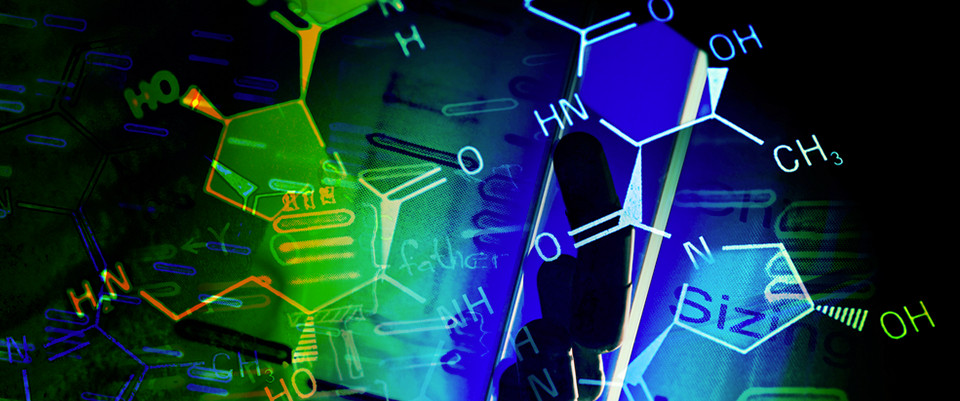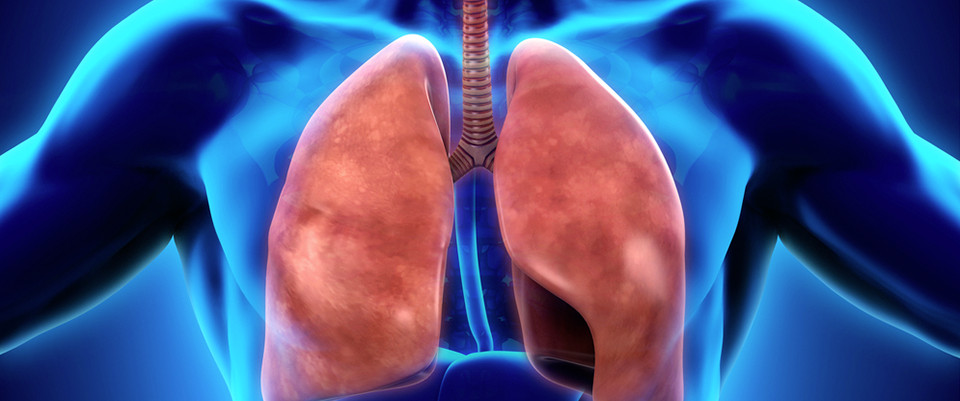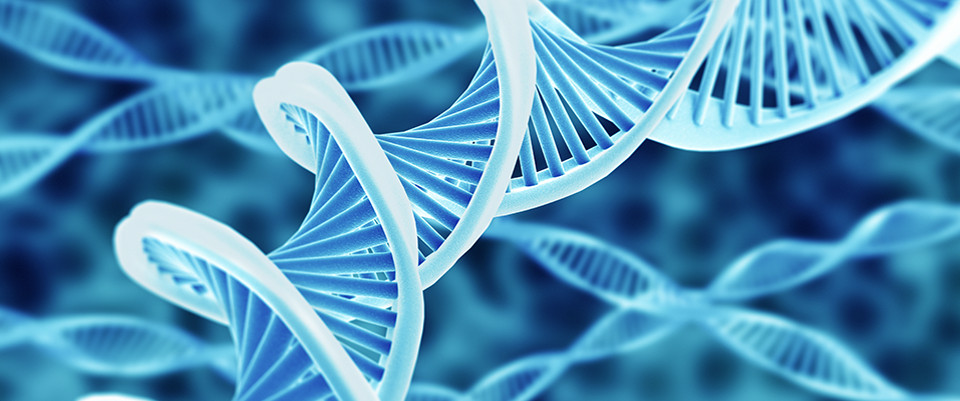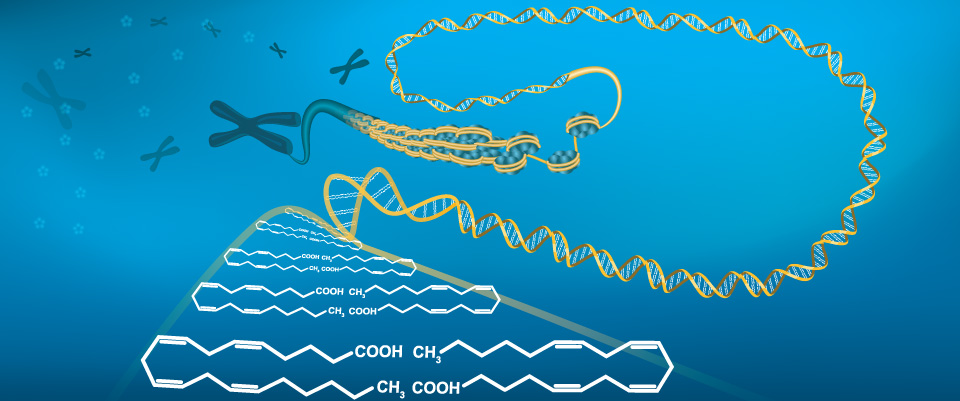PubMed
New developments in Cryptosporidium research.
New developments in Cryptosporidium research.
Int J Parasitol. 2015 Mar 10;
Authors: Ryan U, Hijjawi N
Abstract
Cryptosporidium is an enteric parasite that is considered the second greatest cause of diarrhoea and death in children after rotavirus. Currently, 27 species are recognized as valid and of these, Cryptosporidium hominis and Cryptosporidium parvum are responsible for the majority of infections in humans. Molecular and biological studies indicate that Cryptosporidium is more closely related to gregarine parasites rather than to coccidians. The identification of gregarine-like gamont stages and the ability of Cryptosporidium to complete its life cycle in the absence of host cells further confirm its relationship with gregarines. This opens new avenues into the investigation of pathogenesis, epidemiology, treatment and control of Cryptosporidium. Effective drug treatments and vaccines are not yet available due, in part, to the technical challenges of working on Cryptosporidium in the laboratory. Whole genome sequencing and metabolomics have expanded our understanding of the biochemical requirements of this organism and have identified new drug targets. To effectively combat this important pathogen, increased funding is essential.
PMID: 25769247 [PubMed - as supplied by publisher]
Modulation of Cell Metabolic Pathways and Oxidative Stress Signaling Contribute to Acquired Melphalan Resistance in Multiple Myeloma Cells.
Modulation of Cell Metabolic Pathways and Oxidative Stress Signaling Contribute to Acquired Melphalan Resistance in Multiple Myeloma Cells.
PLoS One. 2015;10(3):e0119857
Authors: Zub KA, Sousa MM, Sarno A, Sharma A, Demirovic A, Rao S, Young C, Aas PA, Ericsson I, Sundan A, Jensen ON, Slupphaug G
Abstract
Alkylating agents are widely used chemotherapeutics in the treatment of many cancers, including leukemia, lymphoma, multiple myeloma, sarcoma, lung, breast and ovarian cancer. Melphalan is the most commonly used chemotherapeutic agent against multiple myeloma. However, despite a 70-80% initial response rate, virtually all patients eventually relapse due to the emergence of drug-resistant tumour cells. By using global proteomic and transcriptomic profiling on melphalan sensitive and resistant RPMI8226 cell lines followed by functional assays, we discovered changes in cellular processes and pathways not previously associated with melphalan resistance in multiple myeloma cells, including a metabolic switch conforming to the Warburg effect (aerobic glycolysis), and an elevated oxidative stress response mediated by VEGF/IL8-signaling. In addition, up-regulated aldo-keto reductase levels of the AKR1C family involved in prostaglandin synthesis contribute to the resistant phenotype. Finally, selected metabolic and oxidative stress response enzymes were targeted by inhibitors, several of which displayed a selective cytotoxicity against the melphalan-resistant cells and should be further explored to elucidate their potential to overcome melphalan resistance.
PMID: 25769101 [PubMed - as supplied by publisher]
Metabolomic Profiling of Urine Samples from Mice Exposed to Protons Reveals Radiation Quality and Dose Specific Differences.
Metabolomic Profiling of Urine Samples from Mice Exposed to Protons Reveals Radiation Quality and Dose Specific Differences.
Radiat Res. 2015 Mar 13;
Authors: Laiakis EC, Trani D, Moon BH, Strawn SJ, Fornace AJ
Abstract
As space travel is expanding to include private tourism and travel beyond low-Earth orbit, so is the risk of exposure to space radiation. Galactic cosmic rays and solar particle events have the potential to expose space travelers to significant doses of radiation that can lead to increased cancer risk and other adverse health consequences. Metabolomics has the potential to assess an individual's risk by exploring the metabolic perturbations in a biofluid or tissue. In this study, C57BL/6 mice were exposed to 0.5 and 2 Gy of 1 GeV/nucleon of protons and the levels of metabolites were evaluated in urine at 4 h after radiation exposure through liquid chromatography coupled to time-of-flight mass spectrometry. Significant differences were identified in metabolites that map to the tricarboxylic acid (TCA) cycle and fatty acid metabolism, suggesting that energy metabolism is severely impacted after exposure to protons. Additionally, various pathways of amino acid metabolism (tryptophan, tyrosine, arginine and proline and phenylalanine) were affected with potential implications for DNA damage repair and cognitive impairment. Finally, presence of products of purine and pyrimidine metabolism points to direct DNA damage or increased apoptosis. Comparison of these metabolomic data to previously published data from our laboratory with gamma radiation strongly suggests a more pronounced effect on metabolism with protons. This is the first metabolomics study with space radiation in an easily accessible biofluid such as urine that further investigates and exemplifies the biological differences at early time points after exposure to different radiation qualities.
PMID: 25768838 [PubMed - as supplied by publisher]
Persistent Organic Pollutants Modify Gut Microbiota-Host Metabolic Homeostasis in Mice Through Aryl Hydrocarbon Receptor Activation.
Persistent Organic Pollutants Modify Gut Microbiota-Host Metabolic Homeostasis in Mice Through Aryl Hydrocarbon Receptor Activation.
Environ Health Perspect. 2015 Mar 13;
Authors: Zhang L, Nichols RG, Correll J, Murray IA, Tanaka N, Smith P, Hubbard TD, Sebastian A, Albert I, Hatzakis E, Gonzalez FJ, Perdew GH, Patterson AD
Abstract
BACKGROUND: Alteration of the gut microbiota through diet and environmental contaminants may disturb physiological homeostasis, leading to various diseases including obesity and type 2 diabetes. Since most exposure to environmentally-persistent organic pollutants (POPs) occurs through the diet, the host gastrointestinal tract and commensal gut microbiota are likely to be exposed to POPs.
OBJECTIVES: We report that 2,3,7,8-tetrachlorodibenzofuran (TCDF), a persistent environmental contaminant, profoundly impacts the gut microbiota and host metabolism in an aryl hydrocarbon receptor (AHR)-dependent manner.
METHODS: Six-week-old male wild-type and Ahr(-/-) mice on the C57BL/6J background were treated with 24 µg/kg TCDF in the diet for five days. 16S rRNA gene sequencing, (1)H nuclear magnetic resonance (NMR) metabolomics, targeted ultra-performance liquid chromatography coupled with triplequadrupole mass spectrometry (UPLC-TQMS) and biochemical assays were used to determine the microbiota compositions and the physiological and metabolic effects of TCDF.
RESULTS: Dietary TCDF altered the gut microbiota by shifting the ratio of Firmicutes to Bacteroidetes. TCDF-treated mouse cecal contents were enriched with Butyrivibrio spp., but depleted in Oscillobacter spp. in comparison with vehicle-treated mice. These changes in the gut microbiota were associated with altered bile acid metabolism. Further, dietary TCDF inhibited the farnesoid X receptor (FXR) signaling pathway, and triggered significant inflammation and host metabolic disorders as a result of activation of bacterial fermentation, and altering hepatic lipogenesis, gluconeogenesis and glycogenolysis, in an AHR-dependent manner.
CONCLUSION: These findings provide new insights into the biochemical consequences of TCDF exposure involving the alteration of the gut microbiota, modulation of nuclear receptor signaling, and disruption of host metabolism.
PMID: 25768209 [PubMed - as supplied by publisher]
Risk factors and effective management of preeclampsia.
Risk factors and effective management of preeclampsia.
Integr Blood Press Control. 2015;8:7-12
Authors: English FA, Kenny LC, McCarthy FP
Abstract
Preeclampsia, a hypertensive disorder of pregnancy is estimated to complicate 2%-8% of pregnancies and remains a principal cause of maternal and fetal morbidity and mortality. Preeclampsia may present at any gestation but is more commonly encountered in the third trimester. Multiple risk factors have been documented, including: family history, nulliparity, egg donation, diabetes, and obesity. Significant progress has been made in developing tests to predict risk of preeclampsia in pregnancy, but these remain confined to clinical trial settings and center around measuring angiogenic profiles, including placental growth factor or newer tests involving metabolomics. Less progress has been made in developing new treatments and therapeutic targets, and aspirin remains one of the few agents shown to consistently reduce the risk of developing preeclampsia. This review serves to discuss recent advances in risk factor identification, prediction techniques, and management of preeclampsia in antenatal, intrapartum, and postnatal patients.
PMID: 25767405 [PubMed - as supplied by publisher]
Quantification of serum apolipoproteins A-I and B-100 in clinical samples using an automated SISCAPA-MALDI-TOF-MS workflow.
Quantification of serum apolipoproteins A-I and B-100 in clinical samples using an automated SISCAPA-MALDI-TOF-MS workflow.
Methods. 2015 Mar 9;
Authors: van den Broek I, Nouta J, Razavi M, Yip R, Bladergroen MR, Romijn FP, Smit NP, Drews O, Paape R, Suckau D, Deelder AM, van der Burgt YE, Pearson TW, Leigh Anderson N, Cobbaert CM
Abstract
A fully automated workflow was developed and validated for simultaneous quantification of the cardiovascular disease risk markers apolipoproteins A-I (apoA-I) and B-100 (apoB-100) in clinical sera. By coupling of stable-isotope standards and capture by anti-peptide antibodies (SISCAPA) for enrichment of proteotypic peptides from serum digests to matrix-assisted laser desorption/ionisation time-of-flight (MALDI-TOF) MS detection, the standardized platform enabled rapid, liquid chromatography-free quantification at a relatively high throughput of 96 samples in 12 hours. The average imprecision in normo- and triglyceridemic serum pools was 3.8% for apoA-I and 4.2% for apoB-100 (4 replicates over 5 days). If stored properly, the MALDI target containing enriched apoA-1 and apoB-100 peptides could be re-analysed without any effect on bias or imprecision for at least 7 days after initial analysis. Validation of the workflow revealed excellent linearity for daily calibration with external, serum-based calibrators (R(2) of 0.984 for apoA-I and 0.976 for apoB-100 as average over five days), and absence of matrix effects or interference from triglycerides, protein content, hemolysates, or bilirubins. Quantification of apoA-I in 93 normo- and hypertriglyceridemic clinical sera showed good agreement with immunoturbidimetric analysis (slope = 1.01, R(2)=0.95, mean bias = 4.0%). Measurement of apoB-100 in the same clinical sera using both methods, however, revealed several outliers in SISCAPA-MALDI-TOF-MS measurements, possibly as a result of the lower MALDI-TOF-MS signal intensity (slope = 1.09, R(2)=0.91, mean bias = 2.0%). The combination of analytical performance, rapid cycle time and automation potential validate the SISCAPA-MALDI-TOF-MS platform as a valuable approach for standardized and high-throughput quantification of apoA-I and apoB-100 in large sample cohorts.
PMID: 25766926 [PubMed - as supplied by publisher]
Molecular mechanisms of ethanol-associated oro-esophageal squamous cell carcinoma.
Molecular mechanisms of ethanol-associated oro-esophageal squamous cell carcinoma.
Cancer Lett. 2015 Mar 9;
Authors: Liu Y, Chen H, Sun Z, Chen X
Abstract
Alcohol drinking is a major etiological factor of oro-esophageal squamous cell carcinoma (OESCC). Both local and systemic effects of ethanol may promote carcinogenesis, especially among chronic alcoholics. However, molecular mechanisms of ethanol-associated OESCC are still not well understood. In this review, we summarize current understandings and propose three mechanisms of ethanol-associated OESCC: (1) Disturbance of systemic metabolism of nutrients: during ethanol metabolism in the liver, systemic metabolism of retinoids, zinc, iron and methyl groups is altered. These nutrients are known to be associated with the development of OESCC. (2) Disturbance of redox metabolism in squamous epithelial cells: when ethanol is metabolized in oro-esophageal squamous epithelial cells, reactive oxygen species are generated and produce oxidative damage. Meanwhile, ethanol may also disturb fatty-acid metabolism in these cells. (3) Disturbance of signaling pathways in squamous epithelial cells: due to its physico-chemical properties, ethanol changes cell membrane fluidity and shape, and may thus impact multiple signaling pathways. Advanced molecular techniques in genomics, epigenomics, metabolomics and microbiomics will help us elucidate how ethanol promotes OESCC.
PMID: 25766659 [PubMed - as supplied by publisher]
A Targeted Metabolomics Approach toward Understanding Metabolic Variations in Rice under Pesticide Stress.
A Targeted Metabolomics Approach toward Understanding Metabolic Variations in Rice under Pesticide Stress.
Anal Biochem. 2015 Mar 9;
Authors: Mahdavi V, Farimani MM, Fathi F, Ghassempour A
Abstract
Diazinon insecticide is widely applied throughout rice (Oryza sativa L.) fields in Iran. However, concerns are now being raised about its potential adverse impacts on rice fields. In this study, a time-course metabolic change in rice plants was investigated after diazinon treatment using gas chromatography-mass spectrometry (GC-MS) and subsequently, statistical strategy of Random Forest (RF) was performed in order to find the stress-associated effects. According to the results, a wide range of metabolites were dynamically varied as a result of the plant response to diazinon such as biosynthesis and metabolism of sugars, amino acids, organic acids and Phenylpropanoids, all correlating with the exposure time. Plant response was involved in multiple metabolic pathways, most of which were correlated with the exposure time. In this study, RF was explored as a potential multivariate method for GC/MS analysis of metabolomics data of rice (Oryza sativa L.) plants under diazinon stress; more than 31 metabolites were quantitatively determined and time-course metabolic response of the plant during different days after treatment was measured. Results demonstrated RF as a potential multivariate method for gas chromatography-mass spectrometry analysis of changes in plant metabolome under insecticide stress.
PMID: 25766578 [PubMed - as supplied by publisher]
A genome-wide scan for signatures of directional selection in domesticated pigs.
A genome-wide scan for signatures of directional selection in domesticated pigs.
BMC Genomics. 2015 Feb 25;16(1):130
Authors: Moon S, Kim TH, Lee KT, Kwak W, Lee T, Lee SW, Kim MJ, Cho K, Kim N, Chung WH, Sung S, Park T, Cho S, Groenen M, Nielsen R, Kim Y, Kim H
Abstract
BACKGROUND: Animal domestication involved drastic phenotypic changes driven by strong artificial selection and also resulted in new populations of breeds, established by humans. This study aims to identify genes that show evidence of recent artificial selection during pig domestication.
RESULTS: Whole-genome resequencing of 30 individual pigs from domesticated breeds, Landrace and Yorkshire, and 10 Asian wild boars at ~16-fold coverage was performed resulting in over 4.3 million SNPs for 19,990 genes. We constructed a comprehensive genome map of directional selection by detecting selective sweeps using an FST-based approach that detects directional selection in lineages leading to the domesticated breeds and using a haplotype-based test that detects ongoing selective sweeps within the breeds. We show that candidate genes under selection are significantly enriched for loci implicated in quantitative traits important to pig reproduction and production. The candidate gene with the strongest signals of directional selection belongs to group III of the metabolomics glutamate receptors, known to affect brain functions associated with eating behavior, suggesting that loci under strong selection include loci involved in behaviorial traits in domesticated pigs including tameness.
CONCLUSIONS: We show that a significant proportion of selection signatures coincide with loci that were previously inferred to affect phenotypic variation in pigs. We further identify functional enrichment related to behavior, such as signal transduction and neuronal activities, for those targets of selection during domestication in pigs.
PMID: 25765548 [PubMed - as supplied by publisher]
Mechanism study of alachlor biodegradation by Paecilomyces marquandii with proteomic and metabolomic methods.
Mechanism study of alachlor biodegradation by Paecilomyces marquandii with proteomic and metabolomic methods.
J Hazard Mater. 2015 Mar 3;291:52-64
Authors: Szewczyk R, Soboń A, Słaba M, Długoński J
Abstract
Alachlor is an herbicide that is widely used worldwide to protect plant crops against broadleaf weeds and annual grasses. However, due to its endocrine-disrupting activity, its application had been banned in the European Union. As described in our earlier work, Paecilomyces marquandii is a microscopic fungus capable of alachlor removal by N-acetyl oxidation. Our current work uses proteomics and metabolomics to gain a better understanding of alachlor biodegradation by the microscopic fungus P. marquandii. The data revealed that the addition of alachlor reduced the culture growth and glucose consumption rates. Moreover, the rates of glycolysis and the tricarboxylic acids (TCA) cycle increased during the initial stage of growth, and there was a shift toward the formation of supplementary materials (UDP-glucose/galactose) and reactive oxygen species (ROS) scavengers (ascorbate). Proteomic analysis revealed that the presence of xenobiotics resulted in a strong upregulation of enzymes related to energy, sugar metabolism and ROS production. However, the unique overexpression of cyanide hydratase in alachlor-containing cultures may implicate this enzyme as the key protein involved in the alachlor biodegradation pathway. The characterization of P. marquandii-mediated alachlor removal in terms of cell structure and function provides a deeper insight into the strategies of microorganisms toward xenobiotic biodegradation.
PMID: 25765177 [PubMed - as supplied by publisher]
Serial Plasma Metabolites Following Hypoxic-Ischemic Encephalopathy in a Nonhuman Primate Model.
Serial Plasma Metabolites Following Hypoxic-Ischemic Encephalopathy in a Nonhuman Primate Model.
Dev Neurosci. 2015 Feb 27;
Authors: Chun PT, McPherson RJ, Marney LC, Zangeneh SZ, Parsons BA, Shojaie A, Synovec RE, Juul SE
Abstract
Biomarkers that indicate the severity of hypoxic-ischemic brain injury and response to treatment and that predict neurodevelopmental outcomes are urgently needed to improve the care of affected neonates. We hypothesize that sequentially obtained plasma metabolomes will provide indicators of brain injury and repair, allowing for the prediction of neurodevelopmental outcomes. A total of 33 Macaca nemestrina underwent 0, 15 or 18 min of in utero umbilical cord occlusion (UCO) to induce hypoxic-ischemic encephalopathy and were then delivered by hysterotomy, resuscitated and stabilized. Serial blood samples were obtained at baseline (cord blood) and at 0.1, 24, 48, and 72 h of age. Treatment groups included nonasphyxiated controls (n = 7), untreated UCO (n = 11), UCO + hypothermia (HT; n = 6), and UCO + HT + erythropoietin (n = 9). Metabolites were extracted and analyzed using comprehensive two-dimensional gas chromatography coupled with time-of-flight mass spectrometry and quantified by PARAFAC (parallel factor analysis). Using nontargeted discovery-based methods, we identified 63 metabolites as potential biomarkers. The changes in metabolite concentrations were characterized and compared between treatment groups. Further comparison determined that 8 metabolites (arachidonic acid, butanoic acid, citric acid, fumaric acid, lactate, malate, propanoic acid, and succinic acid) correlated with early and/or long-term neurodevelopmental outcomes. The combined outcomes of death or cerebral palsy correlated with citric acid, fumaric acid, lactate, and propanoic acid. This change in circulating metabolome after UCO may reflect cellular metabolism and biochemical changes in response to the severity of brain injury and have potential to predict neurodevelopmental outcomes. © 2015 S. Karger AG, Basel.
PMID: 25765047 [PubMed - as supplied by publisher]
metabolomics; +16 new citations
16 new pubmed citations were retrieved for your search.
Click on the search hyperlink below to display the complete search results:
metabolomics
These pubmed results were generated on 2015/03/13PubMed comprises more than 24 million citations for biomedical literature from MEDLINE, life science journals, and online books.
Citations may include links to full-text content from PubMed Central and publisher web sites.
metabolomics; +37 new citations
37 new pubmed citations were retrieved for your search.
Click on the search hyperlink below to display the complete search results:
metabolomics
These pubmed results were generated on 2015/03/12PubMed comprises more than 24 million citations for biomedical literature from MEDLINE, life science journals, and online books.
Citations may include links to full-text content from PubMed Central and publisher web sites.
Activation of pyruvate dehydrogenase by dichloroacetate has the potential to induce epigenetic remodeling in the heart.
Related Articles
Activation of pyruvate dehydrogenase by dichloroacetate has the potential to induce epigenetic remodeling in the heart.
J Mol Cell Cardiol. 2015 Mar 2;
Authors: Matsuhashi T, Hishiki T, Zhou H, Ono T, Kaneda R, Iso T, Yamaguchi A, Endo J, Katsumata Y, Atsushi A, Yamamoto T, Shirakawa K, Yan X, Shinmura K, Suematsu M, Fukuda K, Sano M
Abstract
Dichloroacetate (DCA) promotes pyruvate entry into the Krebs cycle by inhibiting pyruvate dehydrogenase (PDH) kinase and thereby maintaining PDH in the active dephosphorylated state. DCA has recently gained attention as a potential metabolic-targeting therapy for heart failure but the molecular basis of the therapeutic effect of DCA in the heart remains a mystery. Once-daily oral administration of DCA alleviates pressure overload-induced left ventricular remodeling. We examined changes in the metabolic fate of pyruvate carbon (derived from glucose) entering the Krebs cycle by metabolic interventions of DCA. (13)C6- glucose pathway tracing analysis revealed that instead of being completely oxidized in the mitochondria for ATP production, DCA-mediated PDH dephosphorylation results in an increased acetyl-CoA pool both in control and pressure-overloaded hearts. DCA induces hyperacetylation of histone H3K9 and H4 in a dose-dependent manner in parallel to the dephosphorylation of PDH in cultured cardiomyocytes. DCA administration increases histone H3K9 acetylation in in vivo mouse heart. Interestingly, DCA-dependent histone acetylation was associated with an up-regulation of 2.3% of genes (545 out of 23,474 examined). Gene ontology analysis revealed that these genes are highly enriched in transcription-related categories. This evidence suggests that sustained activation of PDH by DCA results in an overproduction of acetyl-CoA, which exceeds oxidation in the Krebs cycle and results in histone acetylation. We propose that DCA-mediated PDH activation has the potential to induce epigenetic remodeling in the heart, which, at least in part, forms the molecular basis for the therapeutic effect of DCA in the heart.
PMID: 25744081 [PubMed - as supplied by publisher]
UCP1 is an essential mediator of the effects of methionine restriction on energy balance but not insulin sensitivity.
Related Articles
UCP1 is an essential mediator of the effects of methionine restriction on energy balance but not insulin sensitivity.
FASEB J. 2015 Mar 5;
Authors: Wanders D, Burk DH, Cortez CC, Van NT, Stone KP, Baker M, Mendoza T, Mynatt RL, Gettys TW
Abstract
Dietary methionine restriction (MR) by 80% increases energy expenditure (EE), reduces adiposity, and improves insulin sensitivity. We propose that the MR-induced increase in EE limits fat deposition by increasing sympathetic nervous system-dependent remodeling of white adipose tissue and increasing uncoupling protein 1 (UCP1) expression in both white and brown adipose tissue. In independent assessments of the role of UCP1 as a mediator of MR's effects on EE and insulin sensitivity, EE did not differ between wild-type (WT) and Ucp1(-/-) mice on the control diet, but MR increased EE by 31% and reduced adiposity by 25% in WT mice. In contrast, MR failed to increase EE or reduce adiposity in Ucp1(-/-) mice. However, MR was able to increase overall insulin sensitivity by 2.2-fold in both genotypes. Housing temperatures used to minimize (28°C) or increase (23°C) sympathetic nervous system activity revealed temperature-independent effects of the diet on EE. Metabolomics analysis showed that genotypic and dietary effects on white adipose tissue remodeling resulted in profound increases in fatty acid metabolism within this tissue. These findings establish that UCP1 is required for the MR-induced increase in EE but not insulin sensitivity and suggest that diet-induced improvements in insulin sensitivity are not strictly derived from dietary effects on energy balance.-Wanders, D., Burk, D. H., Cortez, C. C., Van, N. T., Stone, K. P., Baker, M., Mendoza, T., Mynatt, R. L., Gettys, T. W. UCP1 is an essential mediator of the effects of methionine restriction on energy balance but not insulin sensitivity.
PMID: 25742717 [PubMed - as supplied by publisher]
The Human Toxome Project.
Related Articles
The Human Toxome Project.
ALTEX. 2015 Mar 4;
Authors: Bouhifd M, Andersen ME, Baghdikian C, Boekelheide K, Crofton KM, Fornace Jr AJ, Kleensang A, Li H, Livi C, Maertens A, McMullen PD, Rosenberg M, Thomas R, Vantangoli M, Yager JD, Zhao L, Hartung T
Abstract
The Human Toxome Project, funded as an NIH Transformative Research grant 2011-2016, is focused on developing the concepts and the means for deducing, validating and sharing molecular pathways of toxicity (PoT). Using the test case of estrogenic endocrine disruption, the responses of MCF-7 human breast cancer cells are being phenotyped by transcriptomics and mass-spectroscopy-based metabolomics. The bioinformatics tools for PoT deduction represent a core deliverable. A number of challenges for quality and standardization of cell systems, omics technologies and bioinformatics are being addressed. In parallel, concepts for annotation, validation and sharing of PoT information, as well as their link to adverse outcomes, are being developed. A reasonably comprehensive public database of PoT, the Human Toxome Knowledge-base, could become a point of reference for toxicological research and regulatory test strategies.
PMID: 25742299 [PubMed - as supplied by publisher]
Health effects from swimming training in chlorinated pools and the corresponding metabolic stress pathways.
Related Articles
Health effects from swimming training in chlorinated pools and the corresponding metabolic stress pathways.
PLoS One. 2015;10(3):e0119241
Authors: Li JH, Wang ZH, Zhu XJ, Deng ZH, Cai CX, Qiu LQ, Chen W, Lin YJ
Abstract
Chlorination is the most popular method for disinfecting swimming pool water; however, although pathogens are being killed, many toxic compounds, called disinfection by-products (DBPs), are formed. Numerous epidemiological publications have associated the chlorination of pools with dysfunctions of the respiratory system and with some other diseases. However, the findings concerning these associations are not always consistent and have not been confirmed by toxicological studies. Therefore, the health effects from swimming in chlorinated pools and the corresponding stress reactions in organisms are unclear. In this study, we show that although the growth and behaviors of experimental rats were not affected, their health, training effects and metabolic profiles were significantly affected by a 12-week swimming training program in chlorinated water identical to that of public pools. Interestingly, the eyes and skin are the organs that are more directly affected than the lungs by the irritants in chlorinated water; instead of chlorination, training intensity, training frequency and choking on water may be the primary factors for lung damage induced by swimming. Among the five major organs (the heart, liver, spleen, lungs and kidneys), the liver is the most likely target of DBPs. Through metabolomics analysis, the corresponding metabolic stress pathways and a defensive system focusing on taurine were presented, based on which the corresponding countermeasures can be developed for swimming athletes and for others who spend a lot of time in chlorinated swimming pools.
PMID: 25742134 [PubMed - in process]
The role of metabolomics in osteoarthritis for early diagnosis, monitoring prognosis and treatment.
Related Articles
The role of metabolomics in osteoarthritis for early diagnosis, monitoring prognosis and treatment.
Eklem Hastalik Cerrahisi. 2015 Apr;26(1):1
Authors: Atik OŞ
PMID: 25741911 [PubMed - in process]
Phospholipase D affects translocation of NPR1 to the nucleus in Arabidopsis thaliana.
Related Articles
Phospholipase D affects translocation of NPR1 to the nucleus in Arabidopsis thaliana.
Front Plant Sci. 2015;6:59
Authors: Janda M, Šašek V, Chmelařová H, Andrejch J, Nováková M, Hajšlová J, Burketová L, Valentová O
Abstract
Phytohormone salicylic acid (SA) is a crucial component of plant-induced defense against biotrophic pathogens. Although the key players of the SA pathway are known, there are still gaps in the understanding of the molecular mechanism and the regulation of particular steps. In our previous research, we showed in Arabidopsis suspension cells that n-butanol, which specifically modulates phospholipase D activity, significantly suppresses the transcription of the pathogenesis related (PR-1) gene, which is generally accepted as the SA pathway marker. In the presented study, we have investigated the site of n-butanol action in the SA pathway. We were able to show in Arabidopsis plants treated with SA that n-butanol inhibits the transcription of defense genes (PR-1, WRKY38). Fluorescence microscopy of Arabidopsis thaliana mutants expressing 35S::NPR1-GFP (nonexpressor pathogenesis related 1) revealed significantly decreased nuclear localization of NPR1 in the presence of n-butanol. On the other hand, n-butanol did not decrease the nuclear localization of NPR1 in 35S::npr1C82A-GFP and 35S::npr1C216A-GFP mutants constitutively expressing NPR1 monomers. Mass spectrometric analysis of plant extracts showed that n-butanol significantly changes the metabolic fingerprinting while t-butanol had no effect. We found groups of the plant metabolites, influenced differently by SA and n-butanol treatment. Thus, we proposed several metabolites as markers for n-butanol action.
PMID: 25741350 [PubMed]
Integration of metabolomics data into metabolic networks.
Related Articles
Integration of metabolomics data into metabolic networks.
Front Plant Sci. 2015;6:49
Authors: Töpfer N, Kleessen S, Nikoloski Z
Abstract
Metabolite levels together with their corresponding metabolic fluxes are integrative outcomes of biochemical transformations and regulatory processes and they can be used to characterize the response of biological systems to genetic and/or environmental changes. However, while changes in transcript or to some extent protein levels can usually be traced back to one or several responsible genes, changes in fluxes and particularly changes in metabolite levels do not follow such rationale and are often the outcome of complex interactions of several components. The increasing quality and coverage of metabolomics technologies have fostered the development of computational approaches for integrating metabolic read-outs with large-scale models to predict the physiological state of a system. Constraint-based approaches, relying on the stoichiometry of the considered reactions, provide a modeling framework amenable to analyses of large-scale systems and to the integration of high-throughput data. Here we review the existing approaches that integrate metabolomics data in variants of constrained-based approaches to refine model reconstructions, to constrain flux predictions in metabolic models, and to relate network structural properties to metabolite levels. Finally, we discuss the challenges and perspectives in the developments of constraint-based modeling approaches driven by metabolomics data.
PMID: 25741348 [PubMed]











